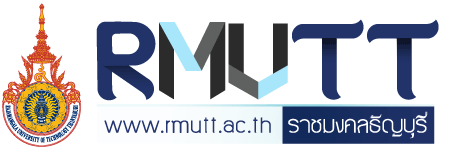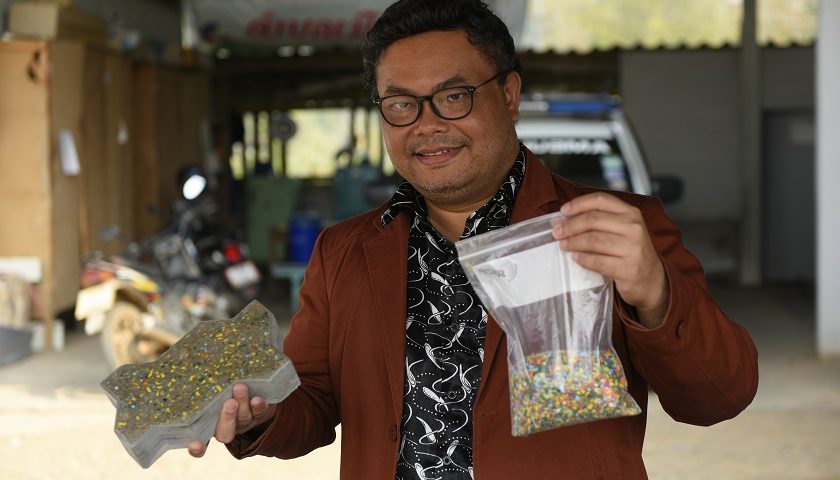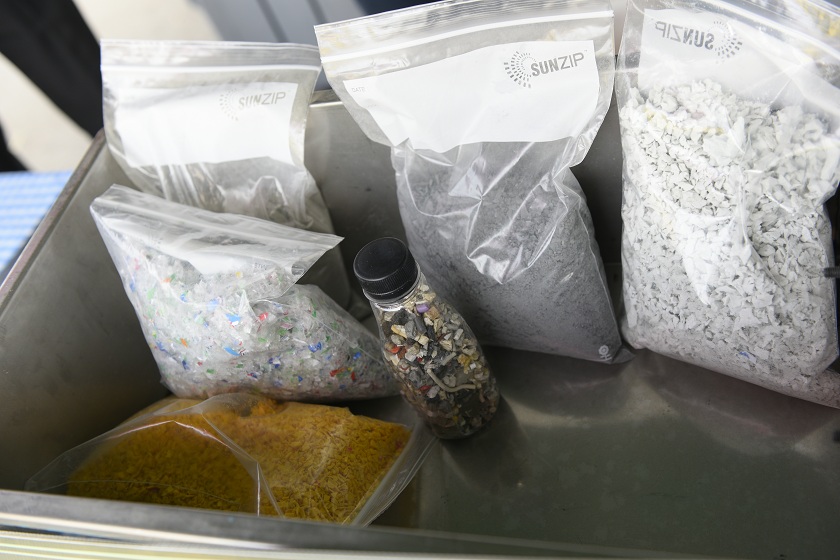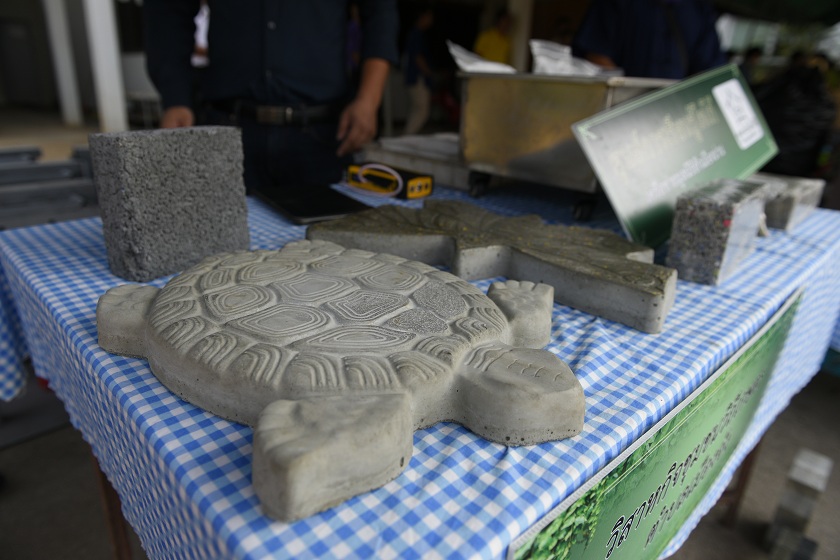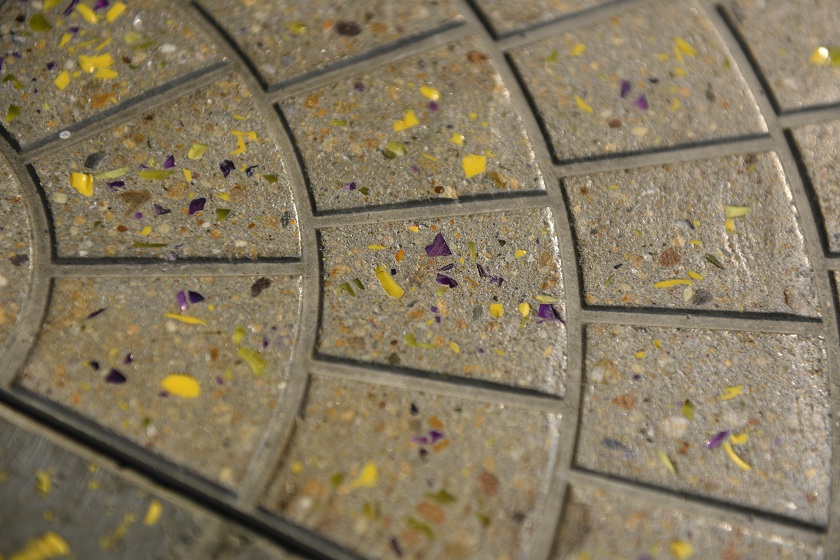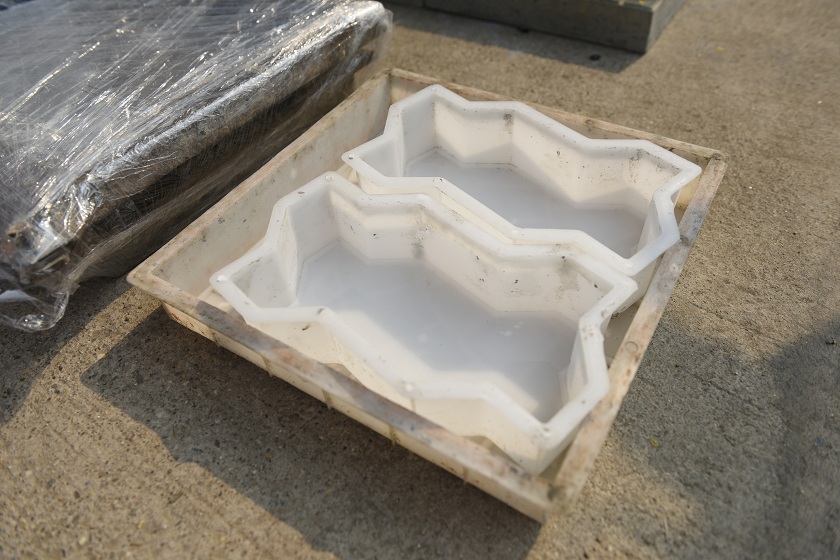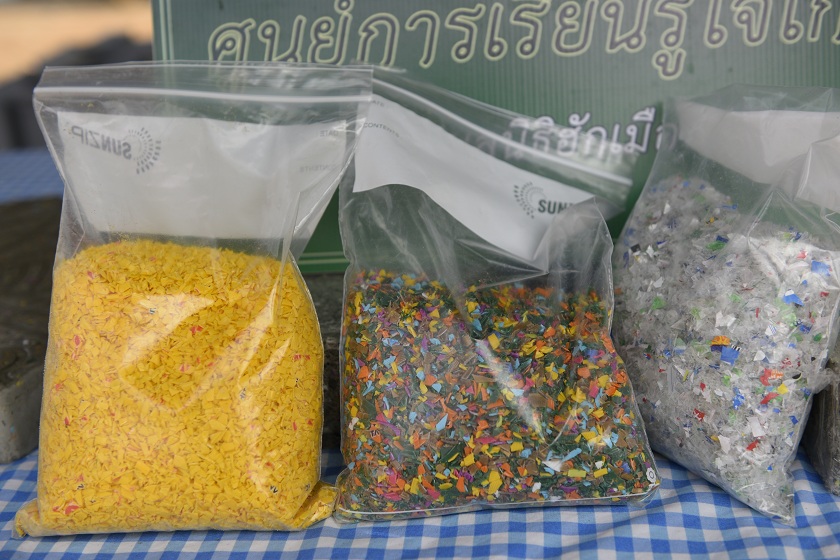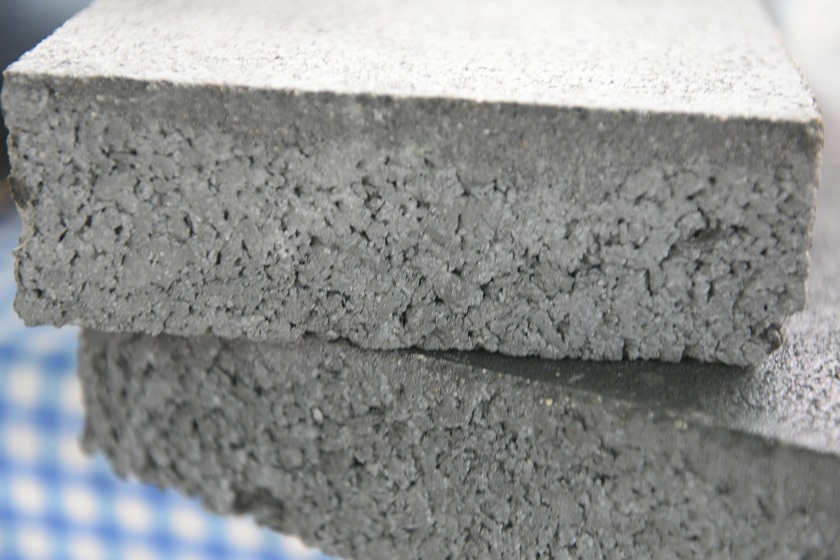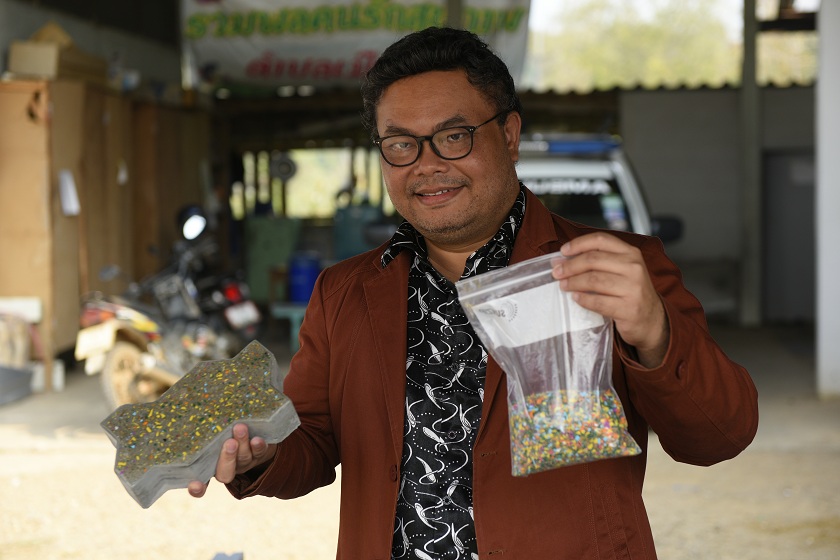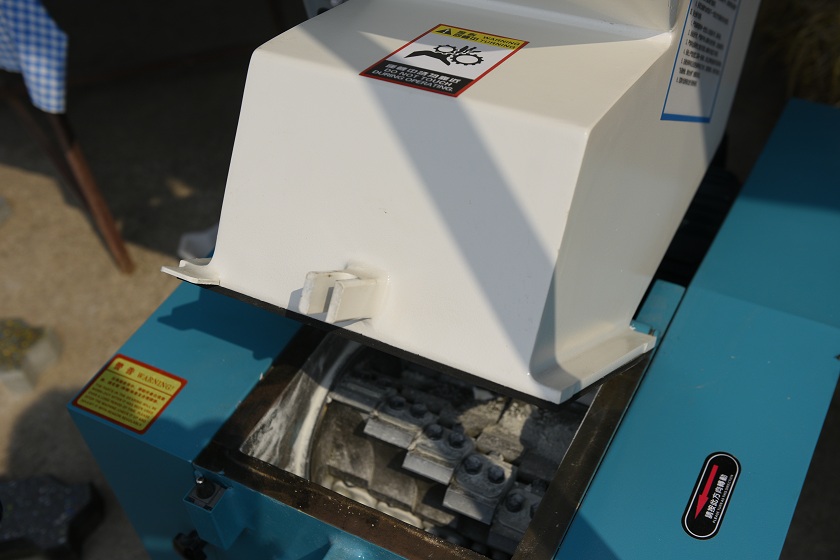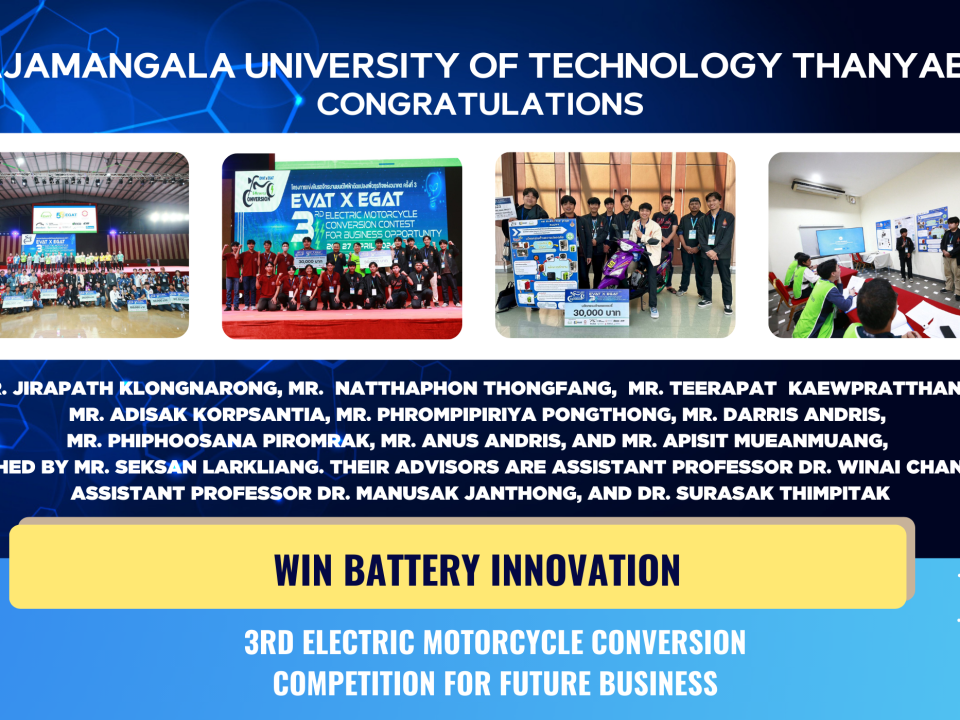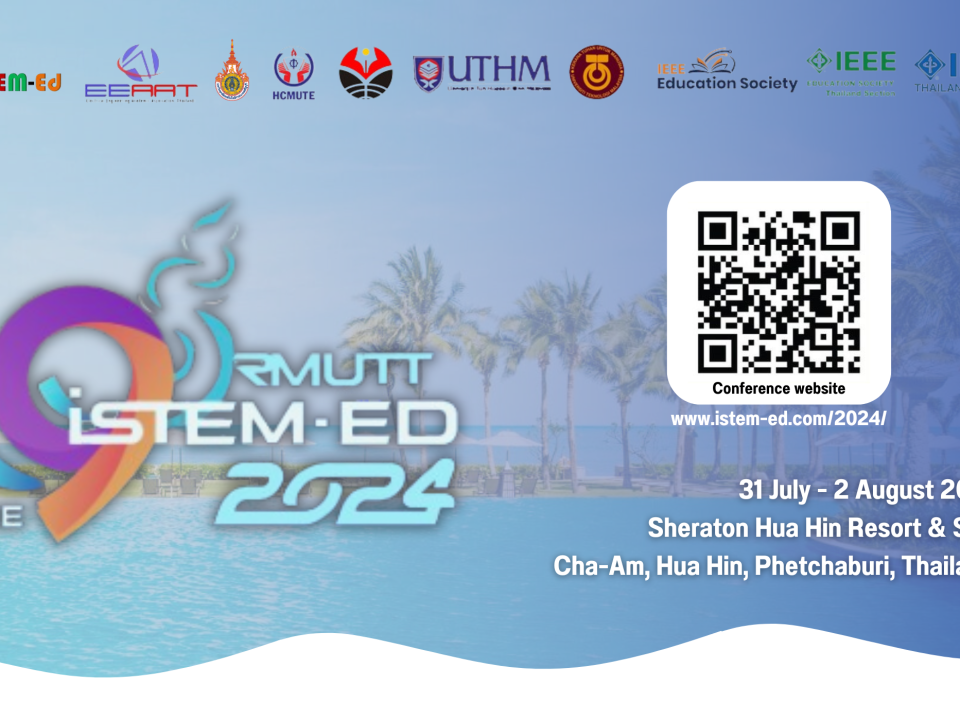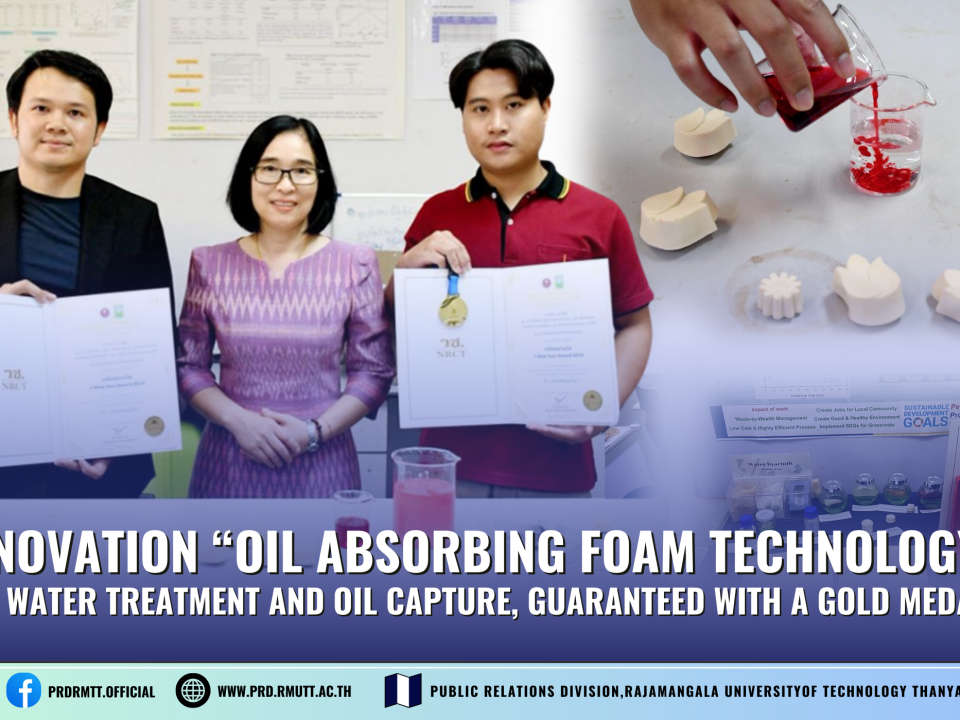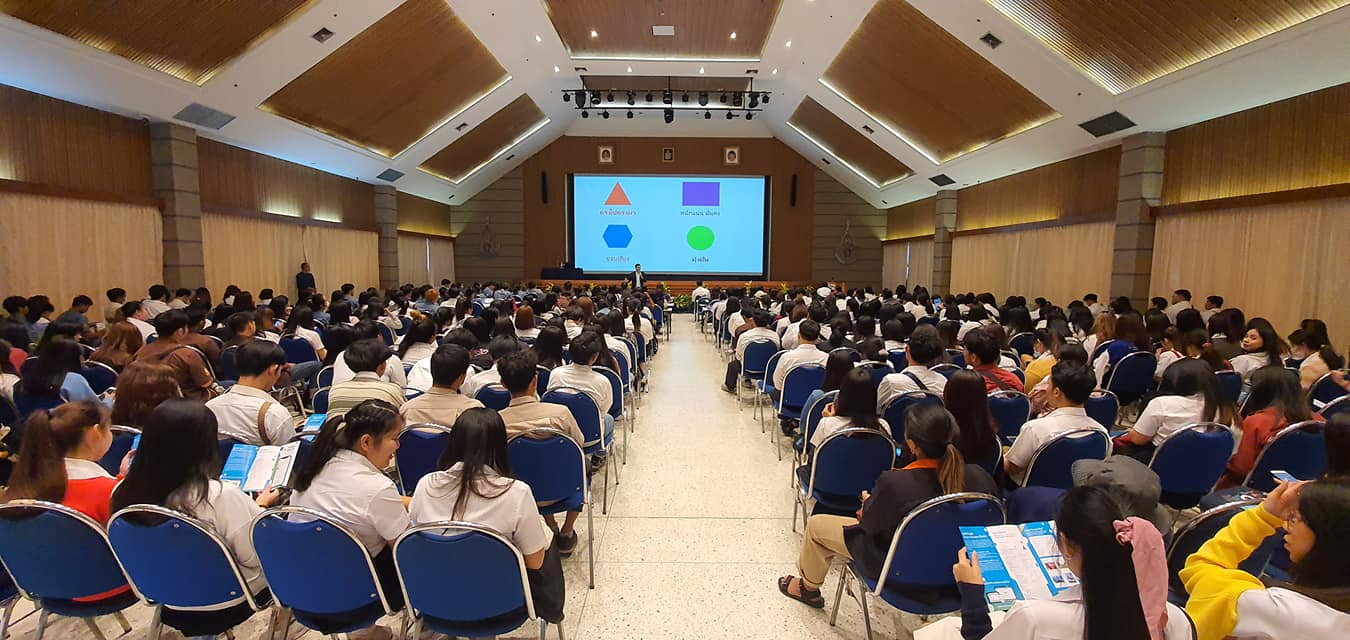
Resume Training Sessions
19/02/2020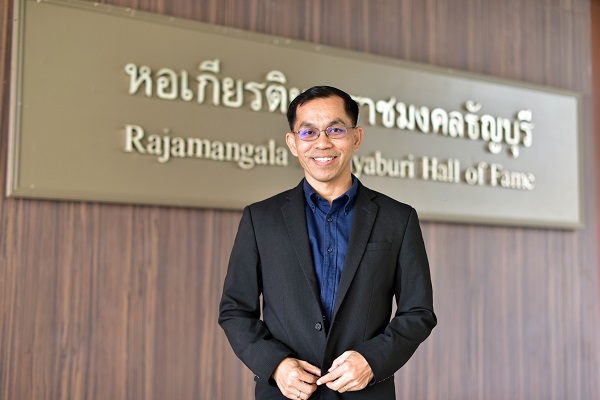
RMUTT researchers driving high potential “Paint Industry Businesses’ towards BOI
27/02/2020Community’s innovative project to transform plastic waste into construction materials.
With the aim of turning plastic waste into environmentally friendly construction materials, such as concrete floor tiles, interlocking concrete blocks, as well as stone blocks as well as generating revenue for the community, a community-based innovation project was introduced in the process.
Mr. Prachum Kamput, lecturer in the Department of Civil Engineering and head of Environmentally Friendly Materials Research Center, Faculty of Engineering Rajamangala University of Technology Thanyaburi revealed that in order to achieve turning plastic waste into construction materials, raising awareness on waste management of Mueang Jung community, Nan province was considered crucial. The locals must know what was expected of them to make the solid wastes management system effective. Additionally, they also needed to understand the processes of plastic waste value adding, For example, collection of plastic bottles was required before grinding them with the granulator until turning into stone flakes. The prepared plastic snowflakes would then be mixed with cement, stone dust and water and the aggregates were later turned into concrete blocks.
The granulated plastic waste was used as substituent for stone dust material because they were lighter in weight. Regarding step by step processing of making concrete block, all components were first mixed together, then the aggregates were molded before pouring them into the mold and leaving them for 1 day allowing the concrete to harden and ready for use. It could be suggested that the process of making the recycled aggregates could easily be learnt by the community, school and university students.
Regarding machinery used in the community, the 100,000 baht mechanical structure was powered by applying forces on foot pedal to turn on, shake, and press the prepared aggregates before drying them. The machine could be used by 2 users at a time and produced approximately 500 blocks a day. The community could set up small and medium sized machines and the investment cost no more than 500,000 baht. While the grinder, mixer, and compressor altogether cost 300,000 baht.
Large machinery and medium-sized machinery were different in terms of their capacity of water added. Most of the large machines preferred to apply with small amounts of water in fact, the medium-sized machines seemed to be fit with the community enterprises due to the fact that the plastic mixed aggregates in the concrete required more water and therefore, large machinery need more adjustments of tools and very difficult to be used.
It was found that the material properties of all types of the recycled blocks were equivalent to the standard ones, however, to be commercially sold, the recycled shall pass the product quality specification tests under relevant TISI Standard.
.
Concerning the market price, a typical 30-cm-width and length brick paver with 5 to 6 cm thickness were priced from 30 to 40 baht. In case the paver pattern was floral or other unique patterns, each paver may cost 70 baht per block. It could be concluded that the recycled waste materials had relatively high values.
In terms of strength and durability, with well controlled aggregated mixtures, by adding 10 percent of plastic waste, they would meet the TISI standard. However, in terms of ‘dam’ or ‘pavement’ concrete curb specifications, the manufacturers were capable of adding more than 50% of plastic waste which did not violate any TISI standard requirements.
Moreover, Mueng Jung community would be able to make use of their plastic waste by turning them into stone curb that could be used to make organic vegetable plot upcycling plastic waste into value-added recycled products.
To be precise, the low-value materials which was commonly found in the community including plastic waste produced by the community, limestone manufactured by nearby factories, as well as dust rock normally seen in the area were used as construction materials.
Related to RMUTT past researches concerning electronic waste, many studies had been attempting to turn metal, plastic, or circuit board into concrete aggregate that could be used as substituent for mortar.
As RMUTT’s lecturer, Mr. Prachum revealed that while he was attempting to educate locals in the community, he found out that Mueng Jung community had always been ready to establish their own community enterprise to create local construction materials. Moreover, with the support from the Muang Jung Sub-district Administration Office, the community would also be able to raise their income as well as to reduce plastic waste in the community to zero.
“Hopefully, one day, there will be no waste left in the community but all we have to do right now is just find and recycle all the glasses, paper, and so on,”.
“What if this community enterprise is strong enough to handle its own business, there will be a great chance for them to gain further income, to increase their manufacturing capacity and yet to distribute their products all over Northern region of Thailand. Subsequently, the community enterprise of Muang Jung could be an example of community’s business model for others. From my experience going to different communities, I would say that this community is the most active one.” Mr. Prachum added.
Regarding the sustainability of this project, I would say that there had been many research projects being introduced before but at the end of the day, no further development is actually conducted. However, this project is quite different from others because the production processes of manufacturing aggregated concrete were much less sophisticated including crushing of plastics, and mixing aggregates, all by hand-made. It could really conserve some of the community’s cost.
Consequently, the prepared-aggregate mixture would be molded into bricks or tile bricks
The benefit of having their own enterprise is that most big factories usually manufacture prepared slabs or building block, while the community enterprise would only yield recycled products leaving out the market share issue. In case, somebody places order directly from the community enterprise, the delivery price would cost less. The business could really be sustainable and profitable.
